Triennials Out of Time: Biennial Sesc_Videobrasil
Solange Farkas, Raphael Fonseca and Renée Akitelek Mboya
March 2023
Triennials Out of Time is a series of short conversations featuring artistic directors and curators of cyclical exhibitions organized by James McAnally for the Counterpublic 2023 civic exhibition and published by MARCH: a journal of art & strategy. Across disparate forms, Triennials Out of Time considers whether the slow build and release of multi-year, cyclical exhibitions may offer a more humane pace that allows proper engagement, inquiry, and reorientation to one’s place and publics.
In this second conversation, this year’s 22nd Biennial Sesc_Videobrasil guest curators Raphael Fonseca and Renée Akitelek Mboya speak with Solange Farkas, Founder and Director of Associação Cultural Videobrasil, who has held the role of Artistic Director of the festival and Biennial Sesc_Videobrasil since its first edition in 1983.
The 22nd Biennial Sesc_Videobrasil, Memory is an Editing Station, will take place in October 2023 at Sesc 24 de Maio, in São Paulo.
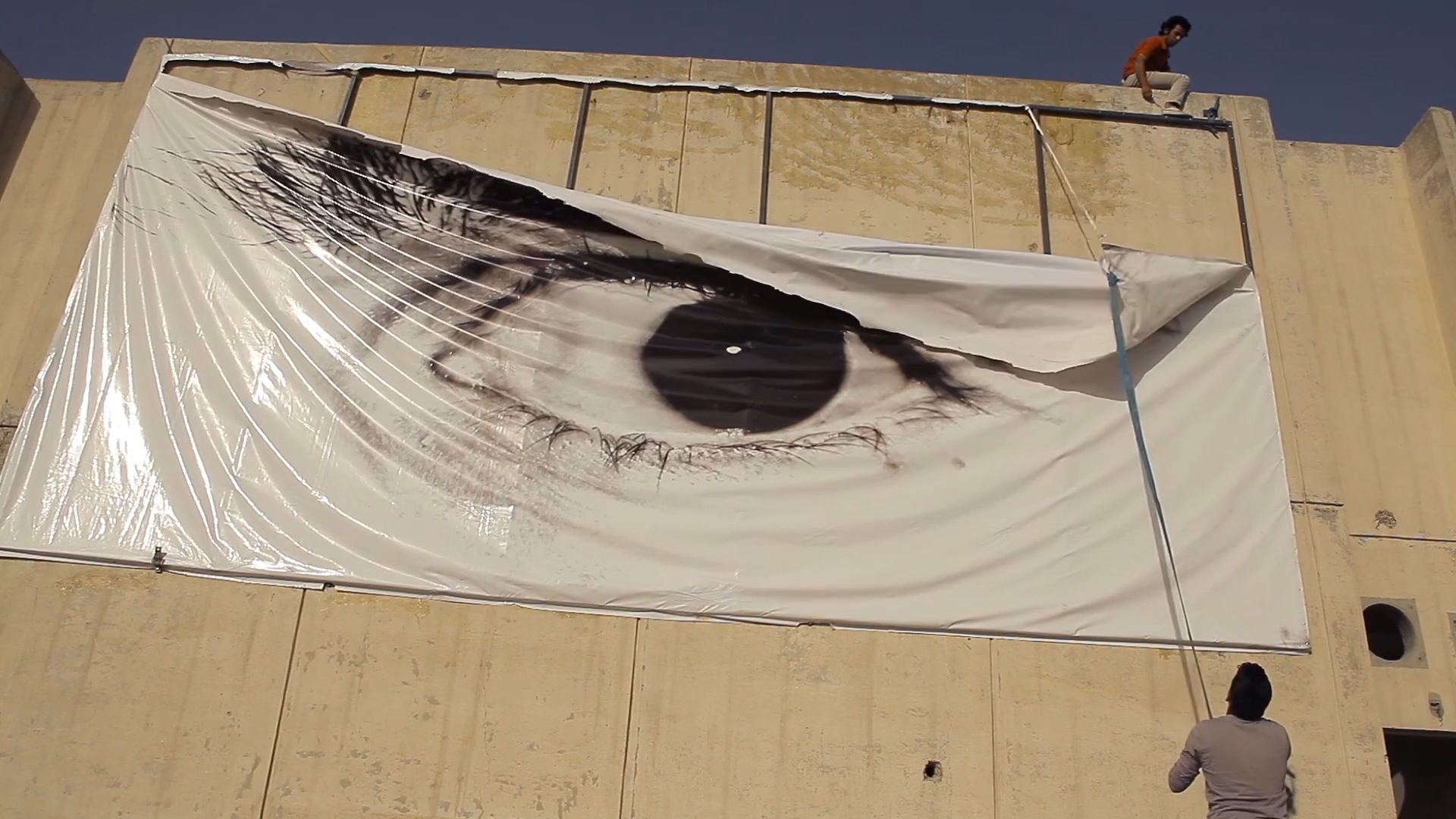
Sada [regroup] with Sajjad Abbas, Bassim Al Shaker, Ali Eyal, Sarah Munaf, Rijin Sahakian (Iraq, 2022); artists for the 22nd Biennial Sesc_Videobrasil: Memory is an Editing Station, October 2023.
Solange Farkas: Festival Videobrasil was born in 1983 as an annual event dedicated initially to video production. In the 1980s, it had a format closer to that of a week-long film festival with daily screenings, debates, and awards on the last day. From the 1990s onwards, Videobrasil began to take place every two years (with occasional exceptions), and even without assuming the biennial name, it progressively came closer to the format of the great visual arts exhibitions. The decision to interpose a longer interval between editions was not a strategic choice. Still, it was made organically with the realization that more research time is necessary between one festival and another. This was especially true starting in 1994 due to the festival shifting geopolitical focus to the Global South, and the need to create networks and links around the world. This term, “Global South,” refers to countries in Latin America, the Caribbean, Africa, the Middle East, Eastern Europe, Asia, and Oceania. The temporal adjustment was, therefore, a consequence of this considerable expansion of the scope of the exhibition and the need for more production time for the event.
The term “biennial” was incorporated into the title in 2019 at the 21st Biennial Sesc_Videobrasil and confirmed the proximity of the exhibition to other art biennials such as Sharjah (United Arab Emirates), Cuenca (Ecuador), Dak’Art (Senegal), and Havana (Cuba). In other words, exhibitions that face enormous difficulties and oppose the circuit of European biennials contribute to a more diverse and exciting panorama of global production outside the traditionally mapped axis of the art market. To guarantee this plural representativeness, we believe it is fundamental to maintain the open call as the primary meeting strategy between artists and curators of the various editions. The challenge is always to communicate the call in a capillary way, in different regions and among minorities. This year, for example, we convened six pre-selection curators from various areas of the world, which helped prepare the ground for the next biennial from multiple critical and creative perspectives.
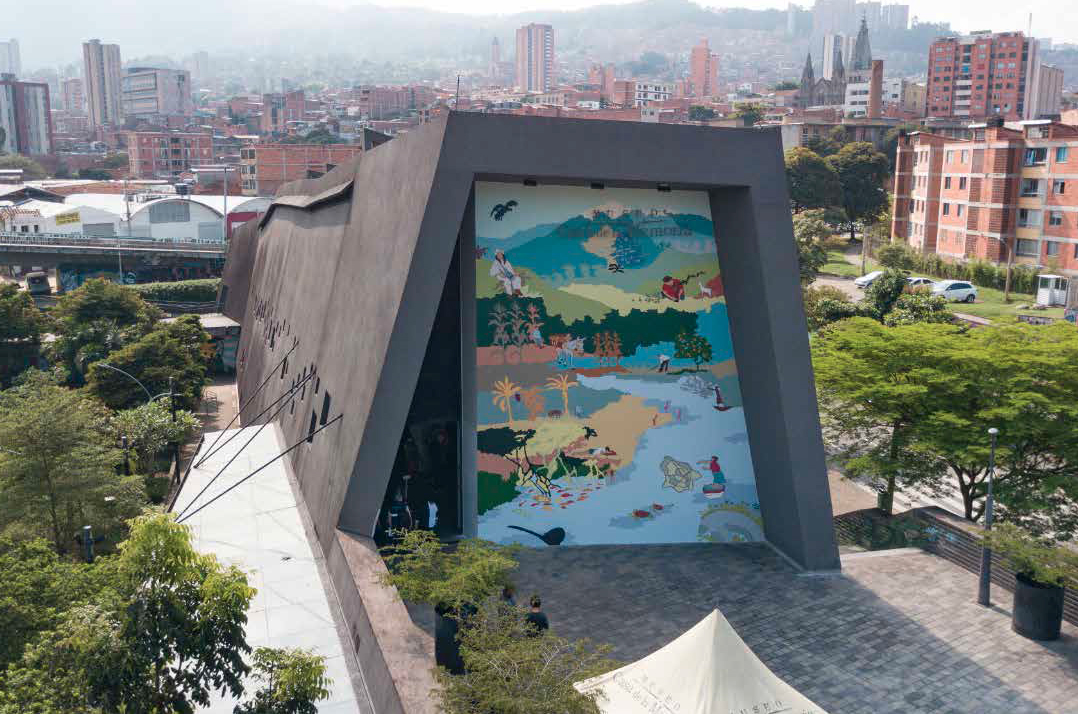
Gabriela Pinilla, “Cuando tenga la Tierra (When I Get the Land)” (Colômbia, 2021); artist for the 22nd Biennial Sesc_Videobrasil: Memory is an Editing Station, October 2023.
Renée Akitelek Mboya: I’m interested in the notion that Videobrasil needed to adapt to incorporate more extended research periods between editions. In addition to making a conscious decision to face the (Global) South, what new frameworks and approaches to building knowledge could Videobrasil access in this new format? I ask this mainly because we all agree that exhibition spaces are pedagogical. Videobrasil, as evidenced by the archives and the discourse generated over the years, has been instrumental in helping us expand our ideas about what an exhibition can do. A second question is: What do you think future formats look like, especially in the post-pandemic period?
SF: It was more precisely in the 8th edition, in 1990, that we assumed the name “International Festival,” included foreign videos in the competitive exhibition, and established more intense exchanges with directors, producers, TV channels, journalists, and other professionals from abroad. It was necessary to supply local producers with technical and language references in times before the internet, when the communication of what was done was more complex. At that moment, a look at what we call the Global South began – that is, at territories that are on the margins of “central capitalism,” outside a circuit (in the case of video and electronic art) already established a few decades ago. We initially invited artists from South America, Africa, and Southeast Asia, but this expanded to other territories in the South over time. It was a tough battle since everything had to be institutionally approved by the “North.” Yet, today we see that the art world turns more and more to production from the “South.” Much of what is most potent in the artistic milieu, what most presents us with paths in a world in deep crisis, comes precisely from these marginalized territories and minority populations. Prejudice is not over, but there is a massive change in the cultural environment.
Returning to Videobrasil, given this expansion of the territories worked on, it became clear that there was a need for more research, for the creation of deep networks with international artists and institutions sometimes from places we had little access to or institutional knowledge of – and for that, we needed a longer interval between the exhibitions which became biennials. Even concerning national production, a more extended period of maturation of the artists’ output seemed necessary – a time to develop languages, the use of equipment, and so on.
As for the second part of the question, recent innovations in the field of communication may have significant effects on the future formats and urgencies of artistic languages. I am referring, in particular, to remote connection modalities – online classes, Instagram live, meetings on video call platforms – which became vital in the field of education and culture during the pandemic. They are tools for non-face-to-face meetings that can inaugurate interesting geopolitical connections in the direction of decentralizing cultural circuits. I don’t think that technologies are a solution to the urgency of creating more inclusive networks, but their use can broaden the horizon of those thinking about the borders between global “Norths” and “Souths.”
Again, this is not an optimistic view as these are typically connection tools managed by multinational corporations that bring unimaginable effects of control over the population and emerge in a dystopian moment of hyper-isolation, giving a particular illusion of hyper-connection. It seems that as any technological innovation disseminates it can profoundly affect our readings of the world, the creative sensitivity of artists, and the openness to new forms of encounter. Finally, this intensification of relationships in environments mediated by screens brings an almost physiological urgency for concreteness, contact with the works’ material qualities, and radical dives into local specificities.
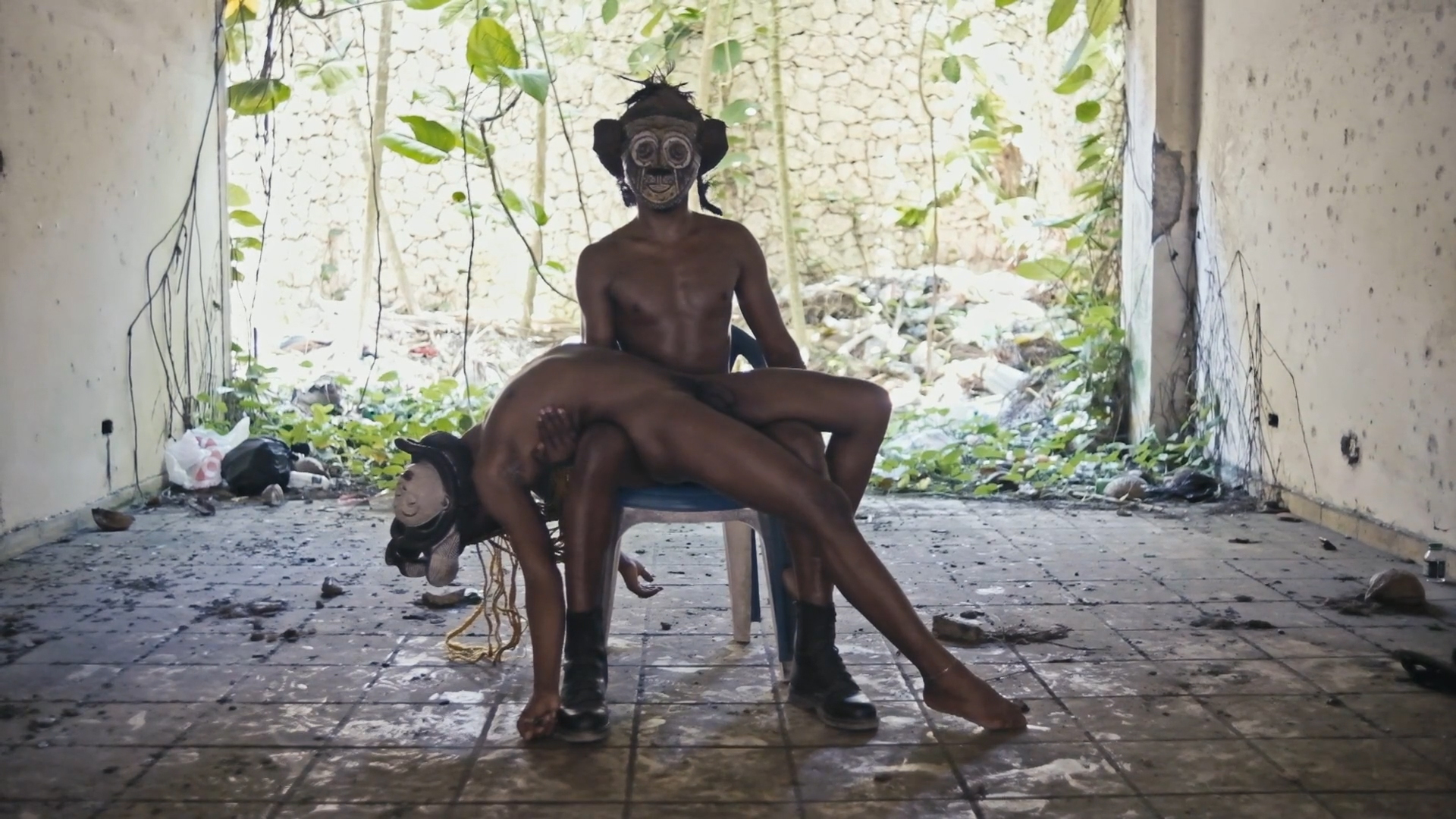
Maksaens Denis, “My Dreams” (Haiti, 2021); artist for the 22nd Biennial Sesc_Videobrasil: Memory is an Editing Station, October 2023.
RAM: Raphael, a lot of your personal research over the last couple of years has been done with popular art movements and these tentative distinctions between art and craft, especially when discussing Indigenous art. Biennial formats open themselves to similar contradictions, overlapping elitist and popular art categories in ways that would be untrustworthy in quotidian exhibition formats. Can you talk a little bit about how a biennale like Videobrasil has dealt with this tension in the years since you’ve been visiting the exhibition and how art and politics have shaped the ethics of the show, especially this year as we’re reflecting on the forty-year legacy of Videobrasil?
RF: I feel that, at least in Brazil, these boundaries between “popular art” (which sometimes in Brazil can be called “folk art” or even art made by “self-taught artists”) and what people would call “contemporary art” (elite categories created by art critics, art historians, curators, and many other visual arts professionals since modernist times) have been narrowing down inside exhibitions in these last years. You can look at the selection of artists in the last documenta to see how different events and institutions worldwide are rethinking these distinctions. Many institutions in Brazil, like the São Paulo Museum of Art, Museum of Modern Art in Rio de Janeiro, and many other museums and even galleries, have been giving more space to a production of art and images that generally were previously seen only in the so-called “naif art” museums. After visiting many editions of Videobrasil, I feel that when the biennial opened to different media besides video, this more diverse range of artists became clearer. I still think there is a lot of work to come, not only regarding artists that come from environments where perhaps they wouldn’t be seen as artists – they could be called craft-makers, for example – but also regarding a type of video work that is sometimes called “visual culture,” “meme-making,” and “pop culture.” Videobrasil could grow if it keeps open to all types of production, especially those that don’t come from hegemonic places like the city of São Paulo (or other art hubs in the Global South) or artists from big galleries.
Art and politics are present in all exhibition projects; I am not particularly attracted to projects that make this relation evident and literal. Sharing, for example, works that deal with humor in a very absurd way can also be very political. The more a large exhibition invites the viewer to dive into different ways of creating and dealing with images, the more complex the vocabulary of its audience grows. And, in this way, we can start looking at, for example, memes and noticing how they should be read in a political key. What I am trying to say is that I feel that a biennial like Videobrasil could and should have this pedagogical role of inviting the audience to reflect on how images by all types of creators generate new questions; making layers of different responses and analyses is vital and, of course, political.
Renée, having in mind that you have experience not only as a curator but also as an artist and art writer – and of course, you are someone that has traveled extensively through Africa but also through very hegemonic places in Europe – I was wondering if you could tell us a bit about how you see this market (let’s call it that) of biennials and triennials. Can one of these significant events change the trajectory of an artist? And, more than that, the audience? Would these events in the Global South be more porous and open to unusual and precarious venues than similar events in Europe?
RAM: I think we must acknowledge, at this point, that how knowledge circulates in the art world inevitably – a racist and classist inevitability – favors art workers in the West (and I mean “West” in the way Donald Trump meant it in 2017). These are the people who have the means and resources to “seek out” so-called “new locations” and patterns within the art world. Something as simple as being able to stop somewhere to see an exhibition or meet an artist without the expense and time it takes to apply for a visa is a privilege that only exists in my imagination – even, perhaps more so, when I am traveling within Africa. I say this to say that the biennial or triennial format as we understand it – that these are exhibitions that introduce a selection of artists and scope of thinking and are committed to doing so with some volume – has been an efficient way for me to learn about artists and institutions working in regions of the world that I cannot access now. Biennials have been central to advancing my knowledge of the art world, especially as someone who didn’t come into thinking about art with the same Western references and vocabulary. In that respect, I appreciate biennials as a way of democratizing access to certain kinds of research.
As to the question of artists, some artists benefit from the collaborative framing a biennial might offer in the sense that the works are in conversation with each other and somewhat recontextualized, but I agree that the opposite is also possible and often actual – that works and artists suffer from being made generic. Ultimately, a biennale is not where you go to see an artist’s complete oeuvre. It’s merely a series of suggestions, which for me is what makes the format so compelling.
“Global South” is a distinction we’ve debated at Biennial Sesc_Videobrasil these past years. The open call showed us that there are a lot of opportunities to engage with artists outside of Europe and North America, and there are systems that support rigorous and involved artistic practices in many different contexts. The fact that we received applications from artist collectives numbering in the hundreds or that some applications were translated from Indigenous languages to national languages to English or Portuguese for us to be able to access them taught me that art will find a way, regardless of what prejudices we are slow to shed.
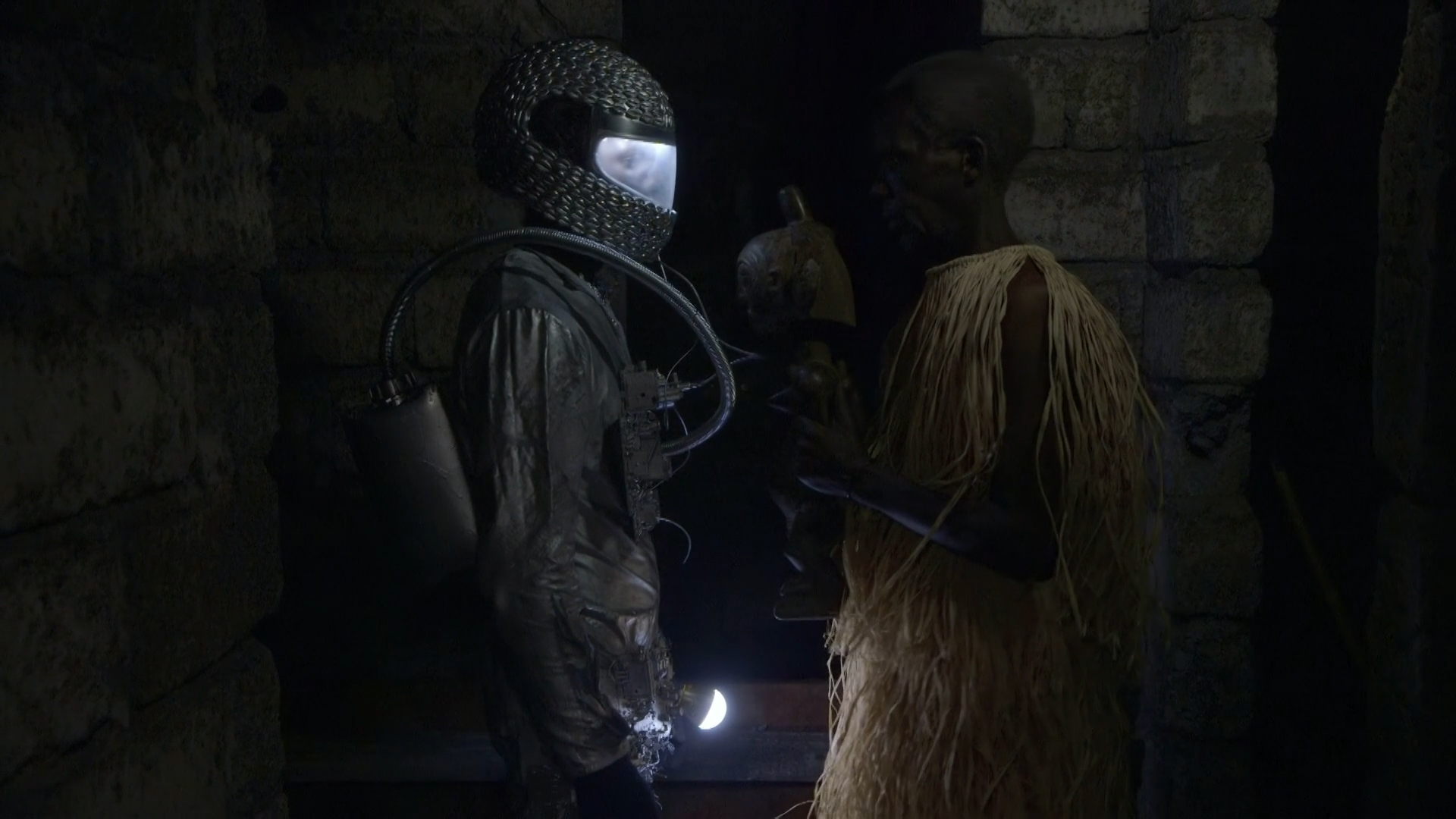
Maisha Maene, “MULIKA” (Democratic Republic of Congo, 2022); artist for the 22nd Biennial Sesc_Videobrasil: Memory is an Editing Station, October 2023.
RF: Knowing more about how these biennial visits were important to your own education, could you share one specific experience you had that was a game changer for you? How can this experience inform, for example, your own practice as a curator of your first biennial, Videobrasil?
RAM: A turning point for me was Carolyn Christov-Bakargiev’s 14th Istanbul Biennial in 2015 titled SALTWATER: A Theory of Thought Forms. You might remember it was an incredibly photogenic exhibition – just beautiful – spread across over thirty locations in the city. Seeing the exhibition was an extremely physically demanding experience. I come from a context where art was primarily a part of dissident subcultures or appropriated by the dictatorship’s propaganda machine for many years. SALTWATER was the first time it was apparent to me that art can be a collaboration with a community, that an exhibition can implicate an entire city, and that it wasn’t something hidden away and known to a select few.
It was a humbling experience because there I encountered my prejudices. In Kenya, we talk a lot about art as a vocation; that some people are called to do this work, that it’s pathological and they are helpless in this urge, that they wake up from fever dreams tormented by talent and bend media to their will like a weird insomniac god. This is nonsense. We make art because we dream of freedom, and it’s a huge responsibility.
A central question for me joining the team of Biennial Sesc_Videobrasil has been to figure out who our communities are and how we can better serve them. How can we converge and co-create with audiences that are experts in their context? How do we dislodge barriers to access, especially in this post-pandemic moment where the threat of disease compounds the anxieties of entering such institutions? We’re incredibly privileged to work with Solange in this respect because she’s built an institution that has changed Brazil and the world many times over.
Raphael, my question for you is based on the diversity and scope of applications we received for this 22nd edition of Videobrasil. Do you think the attitude or enthusiasm toward biennials has shifted these past few years, especially since the beginning of the pandemic? Are people more willing to engage, and how have audience habits changed this time?

Tang Han, “Pink Mao” (China, 2022); artist for the 22nd Biennial Sesc_Videobrasil: Memory is an Editing Station, October 2023.
RF: I feel that people are, more than ever – especially in 2021–22, the years right “after” the pandemic (if we can assume it is over, of course) – anxious to participate in projects as artists, to return to a program workflow as institutions and gallerists, and to visit exhibitions as art-lovers and the general audience. Talking about Brazil – precisely, São Paulo, where I lived between July 2021 and March 2022 – it was kind of overwhelming to see people clearly trying to see all possible exhibitions while going to parties, reconnecting with people, and engaging professionally and personally in all possible ways.
On the other hand, biennials and triennials still bring lots of enthusiasm, especially for the audience, as you described so well in your own experience. But I feel that, for many artists, it became another participation for their CV lists. Of course, participating in biennials can, and does, change a career (look at all the names in the last Venice Biennale, for example), but since these events got bigger and bigger, gathering even more artists than before, and since we now have an international art scene dominated by social media, I feel that for some artists the maintenance of their careers does not depend exclusively on being part of these big projects – instead, it’s more about how they introduce themselves virtually. It is crazy to affirm this, but in the Brazilian art scene, in a country so addicted to social media, sometimes I feel that these big projects have a secondary role. I remember talking to a good colleague, an artist who participated in an edition of the São Paulo Biennial, and he said, “It was nice participating, but no one from the curatorial team gave me much attention.” How do you dialogue and engage one to one when you have ninety artists in your exhibition? It is insane.
Of course, these projects can also change the audience’s life. If your visit to the 14th Istanbul Biennale changed your life, for me, it was the 27th Bienal de São Paulo, titled How to Live Together, from 2006 curated by Lisette Lagnado. I remember being there and feeling: Wow, artists from China? Artists from all these places in Latin America? I was so ignorant. I feel that these exhibitions help us notice how small we are, how we can and should learn even more about art and the world, and how a cycle of these projects can become influential for the schools that visit the show, the networking of art professionals that are there living with these foreigners in the same city for a year . . . Anyway, these large exhibitions can leave excellent and beautiful stains in the memory of individuals and the many histories of a specific place in the world. That can sound – and it is, actually – romantic, but it’s a good idea that I would like to keep with.
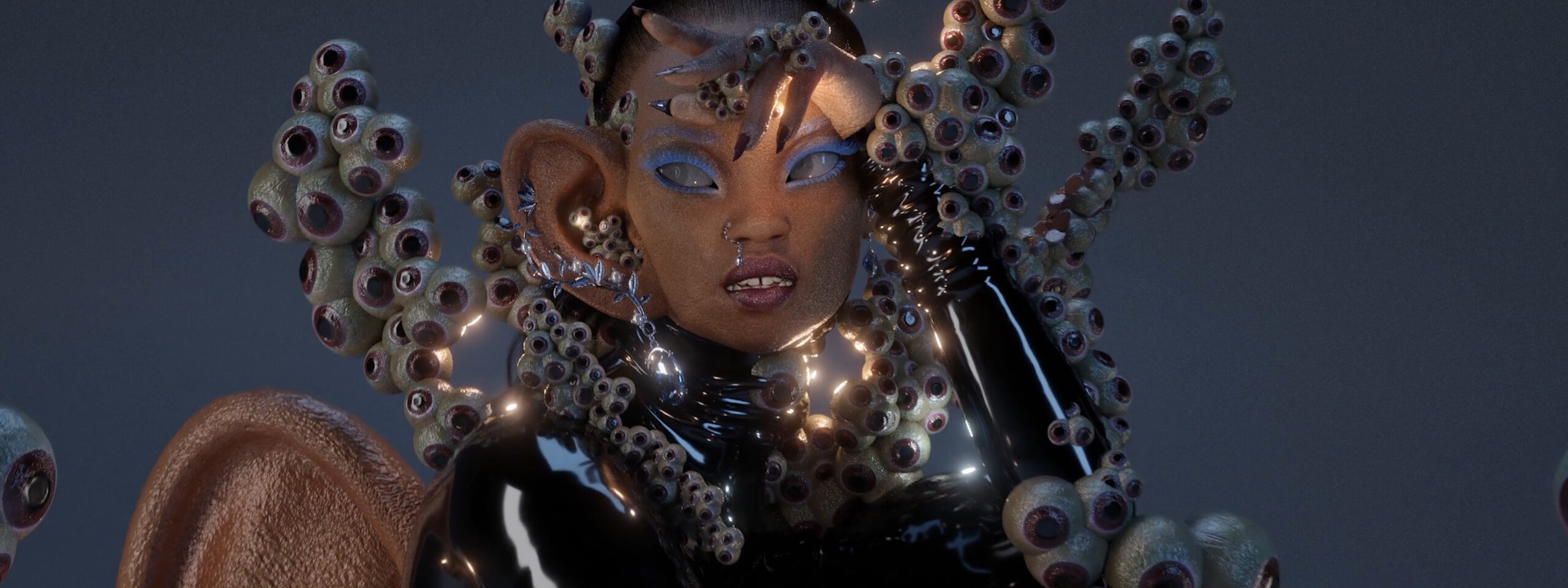
Vitória Cribb, “VIGILANTE_EXTENDED” (Brasil, 2022); artist for the 22nd Biennial Sesc_Videobrasil: Memory is an Editing Station, October 2023.
With four decades of professional activity in the cultural field, Solange Farkas was Chief Curator at the Museu de Arte Moderna da Bahia 2007–10. She is the Founder and Director of Associação Cultural Videobrasil and has held the role of Artistic Director of the festival and Biennial Sesc_Videobrasil since its first edition in 1983. As a guest curator, she has taken part in FUSO (Portugal), Dak’Art – Contemporary African Art Biennale (Senegal), Ok. Video – 6th Jakarta International Video Festival (Indonesia), 10th Sharjah Biennial (United Arab Emirates), 16th Cerveira International Art Biennial (Portugal), and the 5th Video Zone – International Video Art Biennial (Israel).
Raphael Fonseca is a researcher in the areas of art history, criticism, curatorship, and education. Fonseca is the first curator of modern and contemporary Latin American art at the Denver Art Museum, US. He worked as a curator at Niterói Contemporary Art Museum between 2017 and 2020. He holds a doctoral degree in Art Criticism and Art History from the State University of Rio de Janeiro (UERJ) and has received the Marcantonio Vilaça Curatorship Award (2015). Recent exhibitions include Who Tells a Tale Adds a Tail (Denver Art Museum, 2022) and Raio-Que-O-Parta: Fictions of the Modern in Brazil (2022).
Renée Akitelek Mboya is a writer, curator, and filmmaker. Her work addresses biography and storytelling as a form of research and production. Mboya is currently concerned with how images are used to reinforce the institutionalized narrative of the racialized body as a constant danger to law enforcement. Recent projects include Sweet Like Honey (Northern Corner Gallery, Musanze, 2022) and A Glossary of Words My Mother Never Taught Me (Cell Project Space, London, 2021). Mboya works between Kigali, Rwanda, and Nairobi, Kenya, and is a collaborative editor at the Wali Chafu Collective.